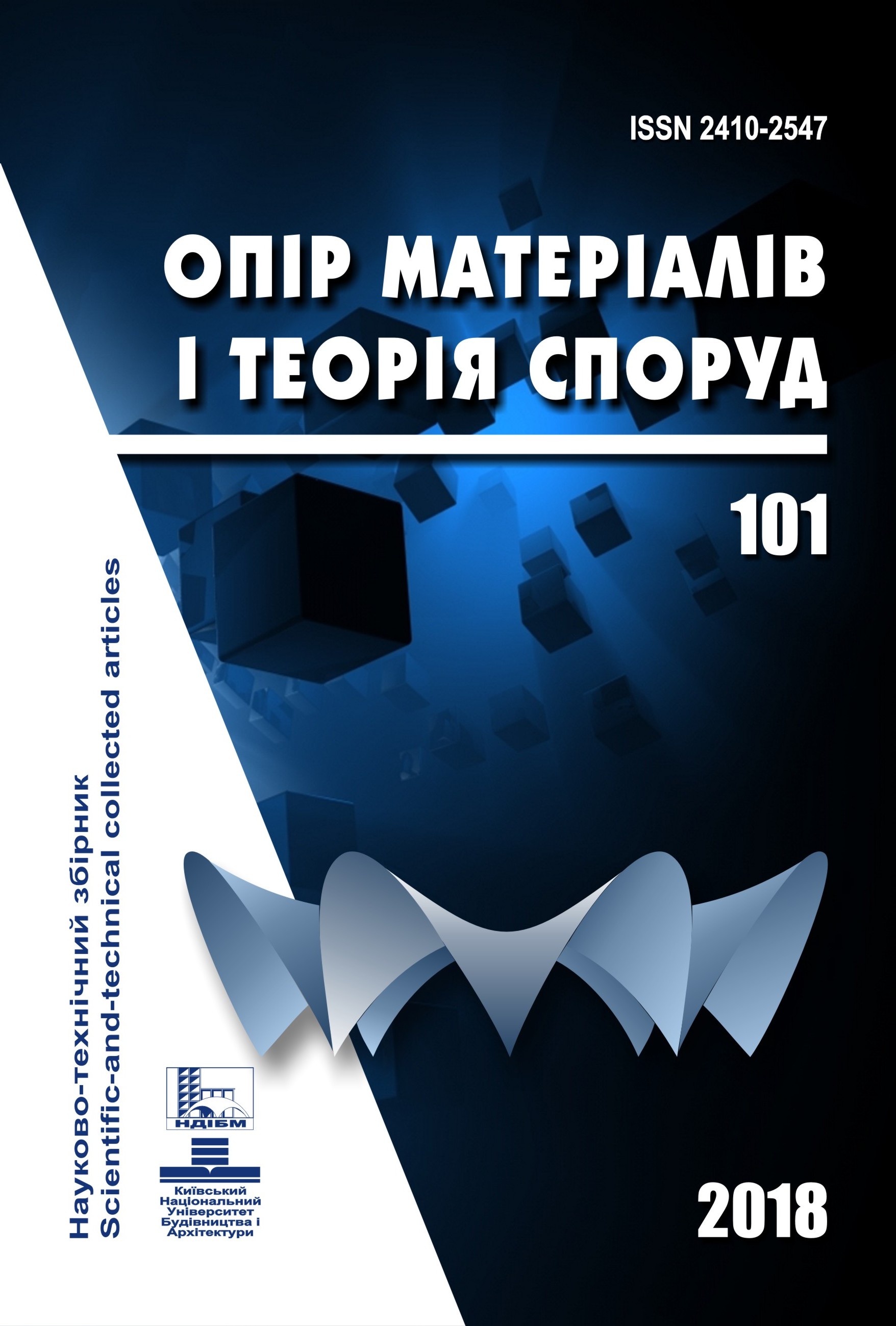Еvolutionary geometrically nonlinear problem of the fracture mechanics for prismatic bodies and bodies of revolution
DOI:
https://doi.org/10.32347/2410-2547.2018.101.3-13Keywords:
dynamics, large plastic deformations, crack, prismatic body, body rotation, semianalitic finite element method, special finite elementAbstract
This article is about the creation of a new task, which greatly expands the class of objects is investigated, both in the geometric and physical characteristics.
To research selected objects, each of which has characteristic features, which requires both correction methods developed in previous works, and creating new ones.
One such object is a reference device, which is a cyclically symmetric body with the limiting case of heterogeneity, that is, the object contains cuts that break the axial symmetry of the form. In addition, as was shown in the works of Bazhenov, Guliar, Topor, Solodei, under quasi-static and dynamic loads at the boundaries of the compounds of the cylindrical part with the tabs having a zone of plastic flow.
If there are cracks in these areas, subject to dynamic loads, the application of traditional approaches to determining the fracture toughness of the object is impossible, because the task parameters do not meet the restrictions which are imposed on the use of the SIF or the J-integral.
For example, studies of the dynamic deformation containment with a longitudinal crack should be analyze the effectiveness of the new parameter fracture toughness, which is in contrast to the J-integral Cherepanov-Rice, not to have restrictions regarding the availability of the loads applied on the crack edges.
It is planned to develop on the basis of SAFEM new approaches for determination of fracture toughness parameters in the spatial bodies with dissimilar physical and mechanical properties in the presence of cracks that develop under the action of dynamic loads.
References
Atluri S. Vyichislitelnyie metodyi v mehanike razrusheniya. (Computational methods in fracture mechanics)- Moskva: Mir, 1990.- 392s.
Bazhenov V.A., VabIschevich M.O., Gulyar O.I., Solodei I.I. Osoblivostsi obchislennya koefItsientiv intensivnosti napruzhen pri dinamichnomu navantazhenni (Features of the calculation of stress intensity factors under dynamic loading) // Opir materialiv i teoriya sporud: nauk.-tehn. zbirnik. - K.:KNUBA, Vip.82, 2008.-s.39-47.
Bloh V.I. Teoriya uprugosti (Theory of elasticity) / [Bloh V.I.] - Harkov: Izd-vo Hark. un-ta.- 1964. –483c.
Kachanov L.M. Osnovyi teorii plastichnosti (The basics of plasticity theory).- M.: Izd. tehniko-teoretich. lit., 1963.- 327 s.
Korotkih Yu.G. Osnovnyie uravneniya termoplastichnosti pri slozhnom nagruzhenii / Korotkih Yu.G., Belevich S.M. (Fundamentals of the theory of plasticity) // Metodyi resheniya zadach uprugosti i plastichnosti.- Gorkiy, 1969.- S.134-141.
Lurie A.I. Neliniyna teoriya pruzhnosti (Nonlinear theory of elasticity). M.: Nauka, 1980, 512s.
Solodei I.I., VabIschevich M.O., Gulyar O.I., Saharov O.S. Obchislennya koefItsienta intensivnosti napruzhen v nestatsionarnih zadachah dinamiki prostorovih tIl na osnovi energetichnogo pidhodu (Calculation of stress intensity factor in non-stationary problems of spatial body dynamics on the basis of the energy approach)// Opir materialiv i teoriya sporud: nauk.-tehn. zbIrnik – K.:KNUBA, Vip.83, 2009.-s.39-47.
Solodei I.I., VabIschevich M.O., Gulyar O.I. Rozv’yazannya nestatsionarnih zadach mehaniki ruynuvannya na osnovi aproksimatsiyi trischini spetsialnimi skinchenimi elementami (Solving non-stationary problems of fracture mechanics on the basis of crack approximation by special finite elements) // Opir materialiv I teoriya sporud: nauk.-tehn. zbirnik – K.:KNUBA, Vip.85, 2009.-s.38-53.
Atluri S.N., Nishioka T. Hybrid methods of analysis. — Unification of Finite Element Methods, Ed. N. Kardestuncer. — Amsterdam: North-Holland, 1984, p. 65-96.
Yagama G., Sakai Y., Ando Y. Analysis of a rapidly propagating crack using finite elements. - Fast Fracture and Crack Arrest, Eds. G. T. Hahn,. M. F. Kanninen, ASTM STP 627, 1977, p. 109—122.
Downloads
Published
Issue
Section
License
Authors retain copyright and grant the journal right of first publication with the work simultaneously licensed under a Creative Commons Attribution License that allows others to share the work with an acknowledgement of the work's authorship and initial publication in this journal.

